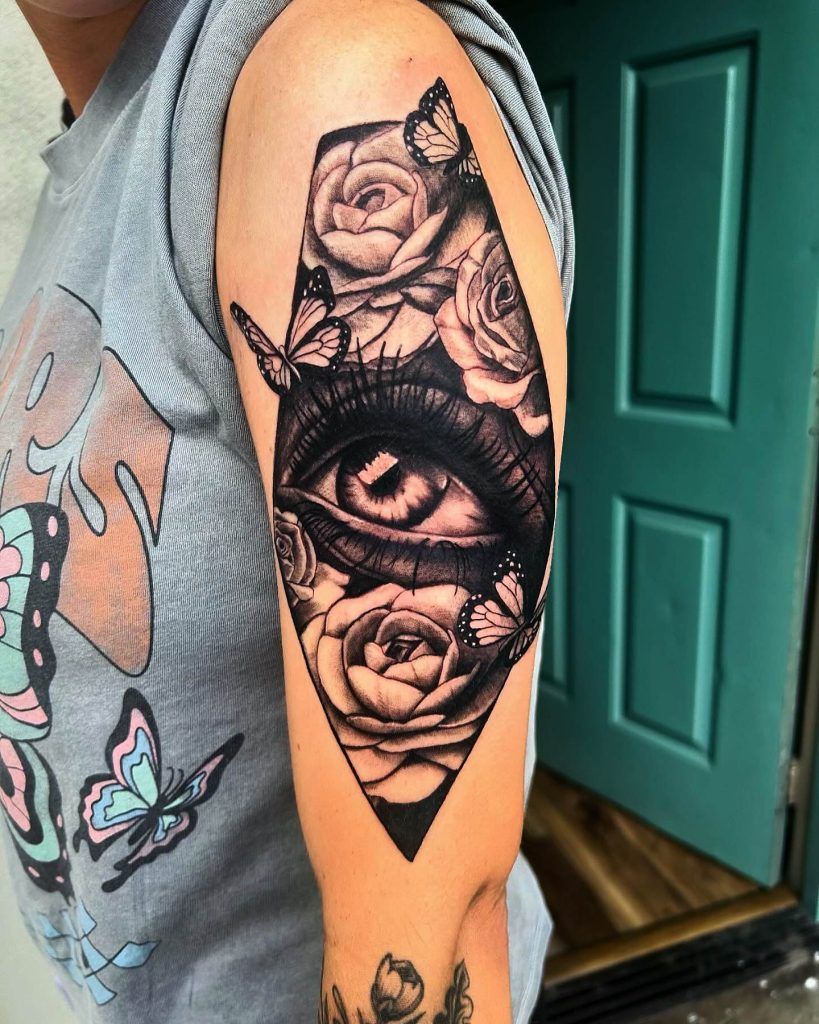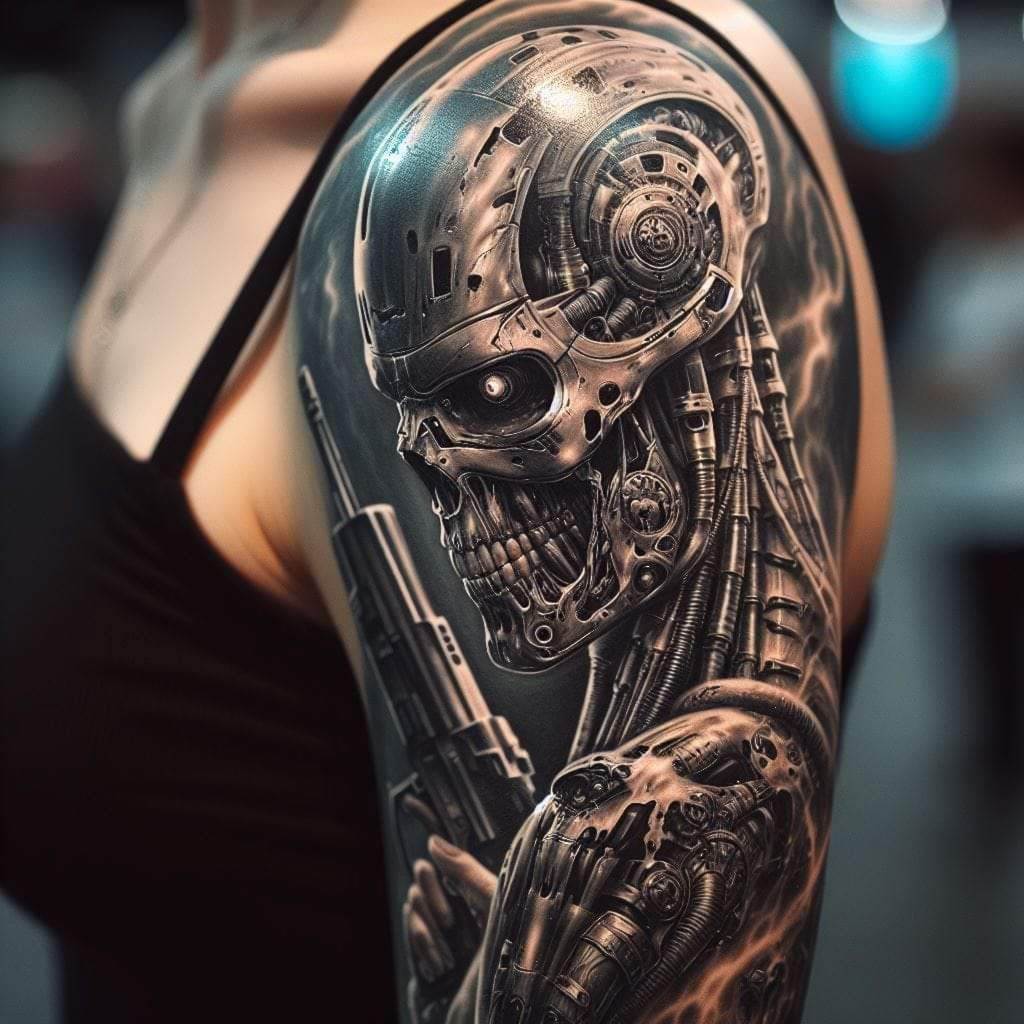Introduction

Understanding Tattoo Touch-Ups
Tattoo touch-ups play a crucial role in maintaining the vibrancy and integrity of body art over time. When a person invests in a tattoo, they naturally want it to look its best for years to come. However, tattoos can fade and change due to various factors, necessitating expert attention. Touch-ups serve to revive colors, restore clarity, and refresh the artwork, ensuring it continues to reflect the original vision. Here are a few key points to consider:
- Purpose of Touch-Ups: Enhance faded colors and redefine blurry lines.
- Frequency: Regular touch-ups can help maintain that fresh appearance.
- Benefits: Extends the lifespan of the tattoo while preserving emotional significance.
Understanding the importance of touch-ups empowers individuals to take proactive steps in caring for their body art, ensuring their tattoos remain as stunning as they were on day one.
Factors Affecting Tattoo Fading
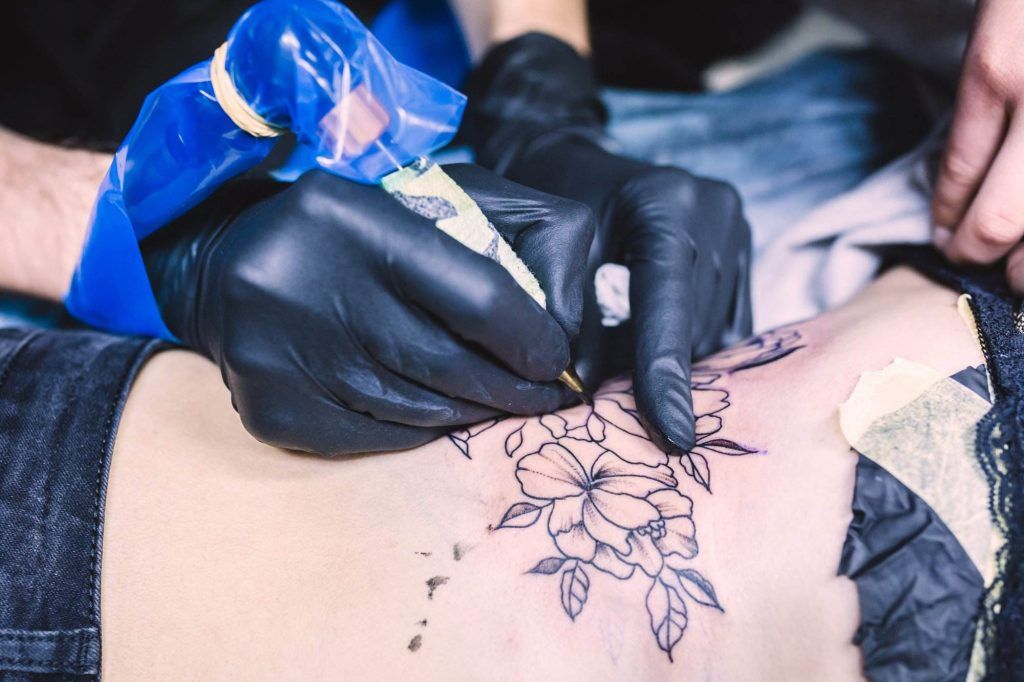
Sun Exposure
One of the most significant contributors to tattoo fading is sun exposure. UV rays can break down the pigments used in tattoos, leading to a dull appearance over time. For anyone with body art, it’s essential to understand how to protect it:
- Wear Sunscreen: Applying a broad-spectrum sunscreen on the tattoo can shield it from harmful rays.
- Seek Shade: When outdoors, taking breaks in the shade can significantly reduce the sun’s impact.
- Wear Clothing: Covering tattoos with clothing offers an extra layer of defense against fading.
Aging
As the body ages, the skin undergoes various changes that can affect the appearance of tattoos. Skin naturally loses elasticity and moisture, which may cause tattoos to appear blurred or less vibrant. Consider these factors related to aging:
- Skin Texture: Changes in texture can alter how a tattoo looks on the skin surface.
- Color Fading: Over time, deeper colors may lose their intensity, necessitating touch-ups.
Being aware of these factors allows tattoo enthusiasts to take proactive steps in maintaining their prized artwork.
Signs Your Tattoo Needs a Touch-Up
Faded Colors
One of the most noticeable signs that a tattoo may require a touch-up is faded colors. Initially vibrant hues can dull over time due to factors like sun exposure and aging. If you find that your tattoo looks lackluster or washed out, it’s likely time to consider a refresh. Here are some indicators:
- Uneven Color: Some areas may appear more faded than others.
- Diminished Detail: Colors that were once bold might now blend into the skin.
Recognizing these signs early can prevent the tattoo from becoming an eyesore.
Blurred Lines
Another key sign that a tattoo needs attention is blurred lines. Sharp, defined edges can become fuzzy, diminishing the overall design. This can happen due to natural aging and skin elasticity changes. Signs of blurred lines include:
- Loss of Definition: Edges may merge into the surrounding skin.
- Diminished Clarity: Intricate details that were once crisp may appear muddled.
Being aware of these signs allows tattoo owners to preserve the beauty and significance of their art, ensuring it remains a source of pride.
Choosing the Right Artist for Touch-Ups
Researching Tattoo Artists
When it comes to maintaining the integrity of your body art, choosing the right artist for touch-ups is crucial. Not all tattoo artists have the same skill set or experience, particularly when it comes to refreshing existing tattoos. Start by researching local artists who specialize in touch-ups. Here are some tips for effective research:
- Online Reviews: Check reviews on platforms that discuss client experiences.
- Social Media: Follow artists on platforms like Instagram to see their recent work.
- Ask for Recommendations: Don’t hesitate to reach out to friends or family for referrals.
Reviewing Portfolio
Once you have a shortlist of artists, take the time to review their portfolios. A well-curated portfolio showcases an artist’s versatility and style. Look for:
- Before and After Photos: This gives insight into their touch-up work.
- Consistency: Ensure they maintain the same quality across various pieces.
- Artistic Style: Make sure their style aligns with your original tattoo’s design.
Choosing the right artist ensures that your touch-up will not only restore your tattoo’s beauty but also enhance its original intention, giving your artwork a renewed lease on life.
Tattoo Touch-Up Process
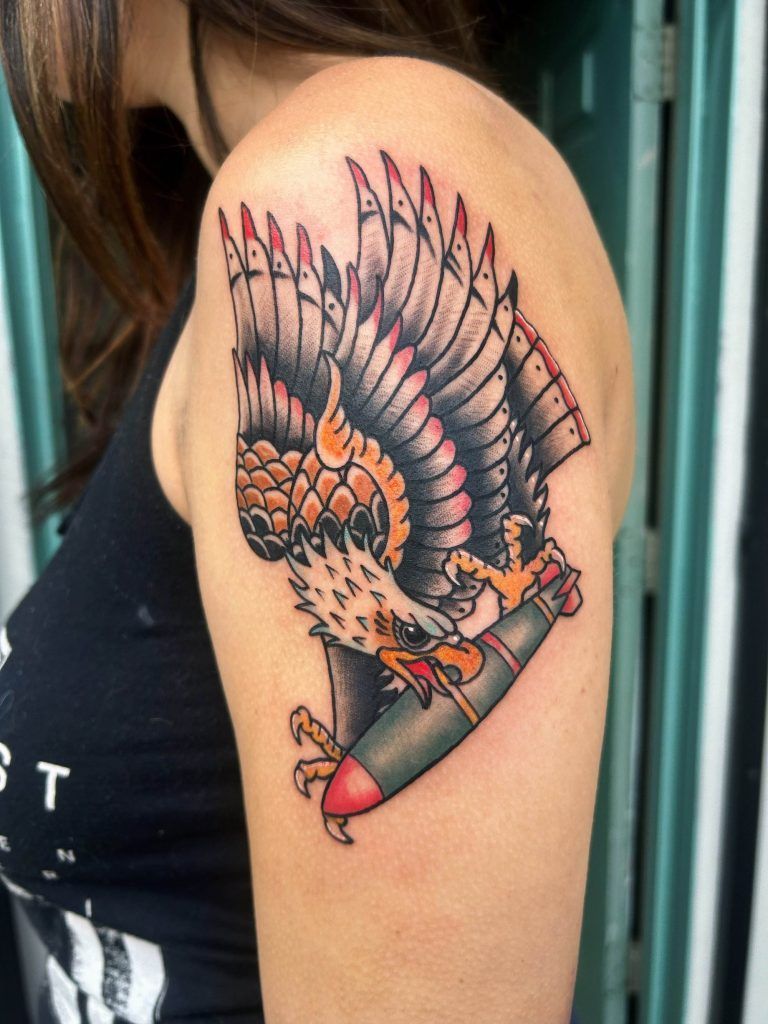
Consultation
The tattoo touch-up process begins with a thorough consultation between the client and the artist. This step is crucial to ensure both parties are aligned on the goals and expectations for the touch-up. During the consultation, consider the following:
- Discussing Concerns: Bring up specific areas of fading or blurring you’d like addressed.
- Artist’s Recommendations: Listen to the artist’s professional insights on the best approach to revitalize your tattoo.
- Design Adjustments: If desired, discuss any adjustments or enhancements to the original design for a more personalized touch.
Creating an open dialogue will set the stage for a successful touch-up session.
Procedure Steps
Once the consultation is complete, the procedure moves into action. Here’s a general outline of what to expect during the touch-up:
- Preparation: The artist will prepare the area and gather necessary equipment, ensuring a clean environment.
- Numbing: Some artists may offer numbing cream for comfort, especially in sensitive areas.
- Applying Ink: The artist then carefully works on the faded areas, matching colors to maintain cohesion with the original tattoo.
- Aftercare Instructions: Following the touch-up, the artist will provide essential aftercare instructions to promote optimal healing.
Understanding these steps helps clients feel more at ease, ensuring a smooth and successful tattoo renewal experience.
Aftercare Tips for Tattoo Touch-Ups
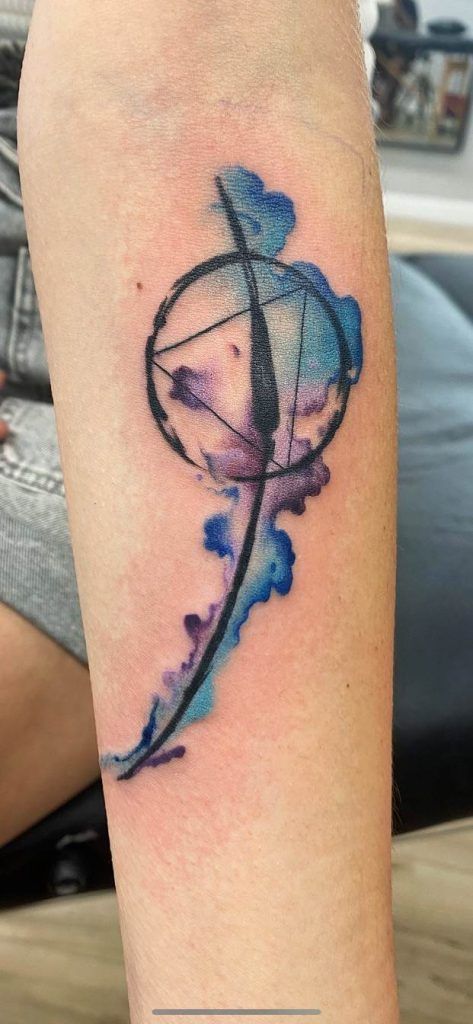
Proper Healing Techniques
After your tattoo touch-up, following proper healing techniques is crucial to ensure the longevity and vibrancy of your artwork. Just like a fresh tattoo, a touch-up requires careful attention. Here are some essential aftercare tips:
- Keep it Clean: Gently wash the touched-up area with mild soap and water to prevent infection.
- Moisturize: Apply a fragrance-free moisturizer or tattoo aftercare ointment as recommended by your artist to maintain hydration.
- Avoid Picking: It’s tempting to scratch or pick at scabs; however, doing so can lead to uneven healing and impact the final appearance.
Following these steps can significantly contribute to the tattoo’s healing and clarity.
Avoiding Sun Exposure
Protecting your tattoo from sun exposure post-touch-up is equally vital. UV rays can cause fading and irritation during the healing process. Here are some strategies to minimize exposure:
- Stay Indoors: In the days following your touch-up, try to stay indoors during peak sunlight hours.
- Use Sunscreen: Once healed, applying a high SPF sunscreen will help protect the pigment long-term.
- Cover Up: Wearing clothing over the tattoo can provide an extra layer of protection, especially during outdoor activities.
Implementing these aftercare strategies helps ensure that your freshly touched-up tattoo remains as stunning as the day it was completed.
Cost of Tattoo Touch-Ups
Factors Impacting Cost
The cost of tattoo touch-ups can vary significantly based on several factors. Understanding these elements can help you prepare financially for the necessary work on your body art. Key factors that impact the cost include:
- Size of the Tattoo: Larger tattoos typically require more time and materials, increasing the overall price.
- Color Complexity: Tattoos with intricate designs and multiple colors may demand more effort and skill, thus raising costs.
- Artist’s Experience: Seasoned artists often charge higher rates due to their expertise and reputation in the field.
Taking these factors into account will help you gauge the potential investment for your touch-up.
Average Price Range
On average, tattoo touch-ups can range anywhere from $50 to $300, depending on the complexity and size. Smaller touch-ups, such as minor color refreshes or line work, may fall at the lower end of this spectrum. For larger tattoos requiring extensive work, the cost could reach the upper limits or even exceed it. Being aware of these averages can assist you in budgeting effectively for the care your tattoo deserves, helping to ensure it remains vibrant and visually appealing for years to come.
Duration Between Touch-Up Sessions
Tattoo Healing Time
Understanding the duration between touch-up sessions largely depends on tattoo healing time. Generally, it takes about 2 to 4 weeks for a tattoo to fully heal. However, the healing process may be influenced by several factors, such as:
- Skin Type: Individuals with sensitive skin may experience longer healing times.
- Tattoo Location: Areas with more movement, like joints, might take longer to heal.
- Aftercare Compliance: Following aftercare instructions diligently can expedite healing.
Allowing the tattoo to heal completely is essential before scheduling a touch-up to ensure the best results.
Artist Recommendations
Most tattoo artists have specific guidelines for when a touch-up is advisable. Common recommendations often include:
- Waiting Period: Artists typically suggest waiting at least 6 to 8 weeks after the initial healing for any touch-ups.
- Regular Maintenance: Discussing a touch-up schedule with your artist, especially for heavily used areas, can help maintain the tattoo’s appearance.
Consulting with your tattoo artist will provide personalized insights based on your specific tattoo and skin type, ensuring that you maintain your art in its best possible condition.
FAQs About Tattoo Touch-Ups
Can Any Tattoo Be Touched-Up?
A common question that arises among tattoo enthusiasts is whether any tattoo can be touched-up. Generally, most tattoos can undergo a touch-up, but there are exceptions based on several factors:
- Condition of the Skin: Tattoos on areas of significant skin damage or excessive fading may not respond well.
- Artwork Complexity: Intricate designs may require more skill and experience from the artist, affecting their ability to refresh the piece.
- Initial Quality: Tattoos performed with poor technique may not yield successful results during a touch-up.
Consulting with your tattoo artist is the best approach to determine if your specific tattoo is a suitable candidate for enhancement.
Is Touch-Up Painful?
Many people wonder about the level of pain associated with touch-ups. While discomfort is subjective and varies from person to person, generally:
- Sensation: Most individuals report that touch-ups are less painful than the initial tattooing process.
- Healing Sensitivity: If the area is still healing from the original tattoo, you may experience some discomfort during the touch-up.
Communicating any concerns with your artist beforehand can help minimize anxiety and make the experience more comfortable. In the end, focusing on the results can make the temporary discomfort worthwhile.
Conclusion
In summary, maintaining the beauty and integrity of your tattoo through touch-ups is essential for any tattoo enthusiast. Understanding the various factors that contribute to fading, recognizing the signs that your tattoo needs a refresh, and knowing how to care for it post-touch-up are crucial steps in preserving your artwork. As discussed, it’s vital to choose the right artist for your touch-up, keep an eye on healing times, and follow proper aftercare. Here are a few final takeaways:
- Regular touch-ups can significantly extend the life of your tattoo.
- Always consult with a qualified artist, as they can offer personalized advice tailored to your specific tattoo.
- Prioritize aftercare and protection from the sun to maintain vibrancy.
Investing time and resources into touch-ups ensures your body art remains a source of pride and personal expression for years to come. Embrace the journey of maintaining your tattoo, and it will continue to reflect your unique journey.

